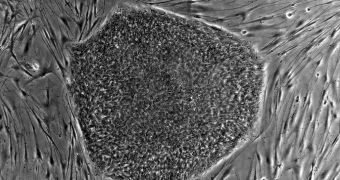Stem cells are the basis from which all other cells in the human body form. They can differentiate into any type of tissue, but only certain types of stem cells can take on certain forms. Now, researchers find a new type of airway stem cells.
The team, which is based at the University of California in Los Angeles (UCLA), believes that these cells in fact help repair the large airways in the lungs. As such, they may play a critically important role in protecting the body against infectious agents and toxins.
Discovering a way of producing them in mass, and forcing them to differentiate according to needs could lead to the development of a new therapies against a wide range of conditions currently affecting these particular airways, experts say.
The generation and clearing of mucus is the main way through which the airways protect the human body. Specialized mucus glands within produce the stuff, which acts as a filter to defend against a host of particles and microorganisms in the air we breathe.
This new lung stem cell will hopefully provide experts with a deeper insight into the critical process of mucus production. The mechanisms governing the normal and excessive mucus production are not yet well known, and a deeper understanding could help contribute to creating new therapies.
The new investigation was carried out by experts at the UCLA Eli and Edythe Broad Center of Regenerative Medicine and Stem Cell Research, who classify the new findings as being of “major importance to the field of lung regeneration.”
Details of the work were published in the June 27 issue of the renowned scientific journal Stem Cells. UCLA postdoctoral scholar Ahmed Hegab was the first author of the new research paper.
“We're very excited that we found this population of cells because it will allow us to study mechanisms of diseases of the upper airway,” UCLA assistant professor of pediatrics and hematology–oncology Dr, Brigitte Gomperts explains.
“For example, there currently are no treatments for excess mucus production, which we see in cystic fibrosis, asthma and chronic obstructive pulmonary disease,” adds the expert, who is also the senior author of the new study.
“But if we can understand the mechanisms of how these stem cells repair the mucus glands, then we may be able to find a way to put the brakes on the system and prevent mucus over-production,” she adds.
“Our ability to identify the stem cells and their regenerative ability has implications for the possible identification of novel therapeutic targets for airway diseases and potential cell-based therapies in the future,” the UCLA team concludes in the paper.

 14 DAY TRIAL //
14 DAY TRIAL //